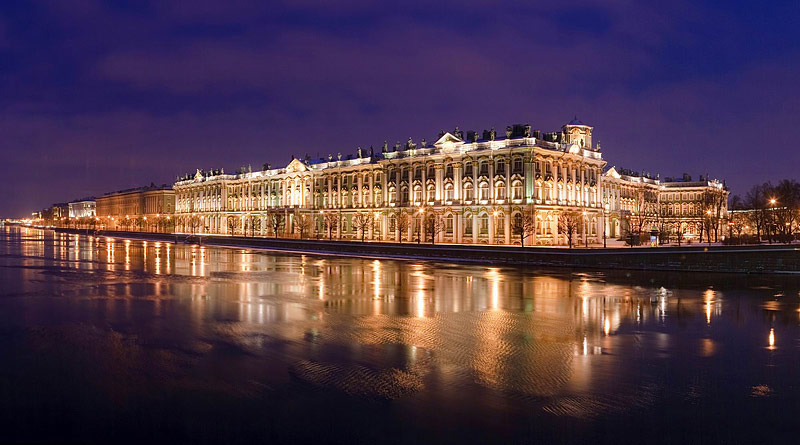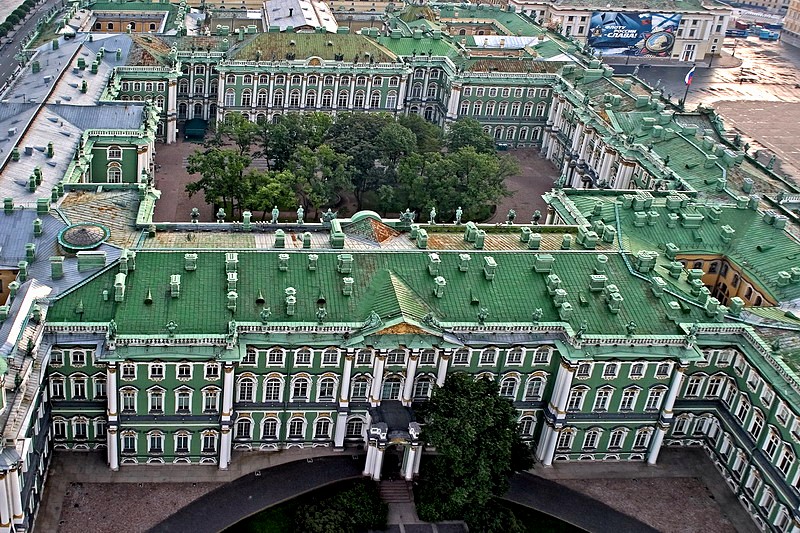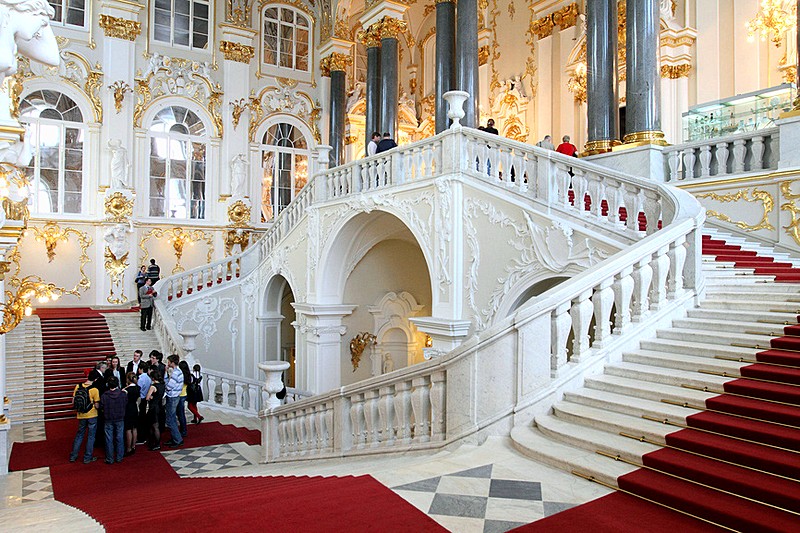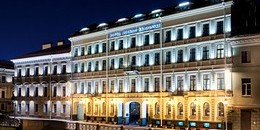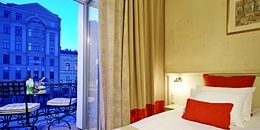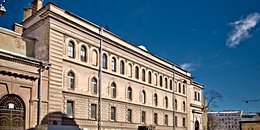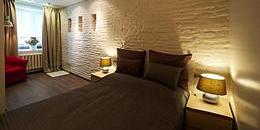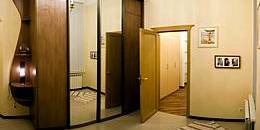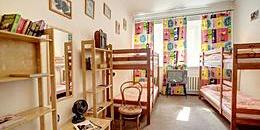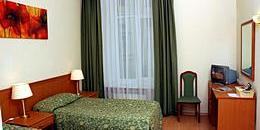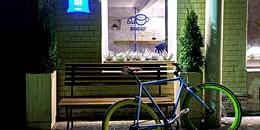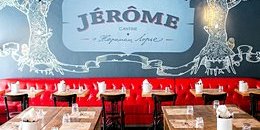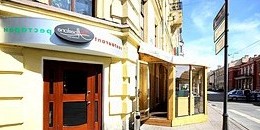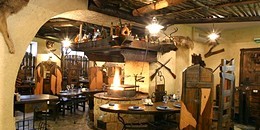The Winter Palace
The first Imperial residence on the site of the Winter Palace was a wooden house in the Dutch style built in 1708 for Peter the Great and his family. This was replaced in 1711 by a stone building, the remains of which formed the foundations of the Hermitage Theatre. Parts of this original palace have now been restored and are open to the public.
Empress Anna Ioannovna was the first of Peter's descendants to reconstruct the palace. In 1731, she commissioned Francesco Bartolomeo Rastrelli, the recently appointed court architect who would go on to become the recognized master of late baroque in Russia, to create a new, larger palace on the site. Completed in 1735, the third Winter Palace served for only 17 years before Rastrelli was again asked, this time by Empress Elizabeth (Elizaveta Petrovna), to expand the building. After two years proposing different plans to adapt the existing building, Rastrelli eventually decided to completely rebuild the palace, and his new design was confirmed by the empress in 1754.
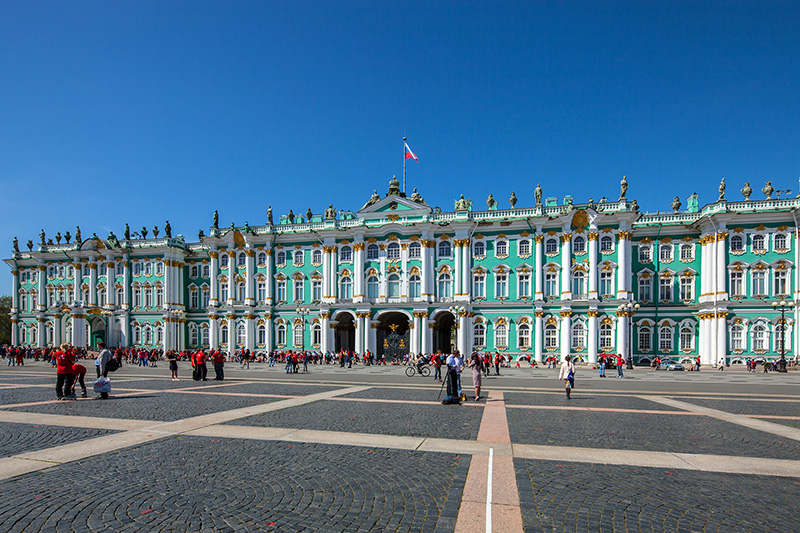
When Catherine the Great came to the throne in 1762, the new palace was nearly complete and, although Catherine removed Rastrelli from the project, his designs for the exterior of the building have remained almost completely unaltered to this day. The building forms a square with an interior courtyard accessed via three archways facing Palace Square. The richly decorated facades feature two levels of richly decorated ionic columns, and the parapets of the building are decorated with statues and vases. (The original stone decorations were replaced with lighter metal substitutes 1892-1902.) The palace is 22m high, and local planning regulations have prevented any building in the city centre rising higher than this ever since.
Within the Winter Palace, continual improvements and revisions were made to the interiors throughout the 18th and 19th centuries. In the 1780s and 1790s, Giacomo Quarenghi and Ivan Starov created a new enfilade of state rooms overlooking the Neva River. Under Emperor Nicholas I, Carlo Rossi added the 1812 War Gallery in 1826.
In December 1837, fire broke out in the Winter Palace, destroying nearly all the palace interiors and only being prevented from spreading to the priceless art collections in the Hermitage with the prior destruction of three passages leading between the two buildings. Nicholas ordered that reconstruction of the palace be completed within one year, a monumental effort considering the construction technologies of the day. The lavish interiors were recreated under the supervision of Vasily Stasov, while his fellow architect Alexander Briullov added new designs in more contemporary styles.
Alexander II was the last of the Tsars to genuinely use the Winter Palace as his main residence. After his assassination in 1881, it became clear that the palace was too large to be properly secured (the first attempt on his life the year before had been a bomb that damaged several rooms in the palace and killed 11 guards). Alexander III and Nicholas II both set up their family residences at suburban palaces, the former at Gatchina and the latter at the Alexander Palace in Tsarskoye Selo. Nonetheless, the Winter Palace was still used for official ceremonies and receptions. A spectacular masked ball commemorating the anniversary of the reign of Tsar Alexey Mikhailovich (1646-1676), the second Romanov Tsar, held in 1903 was the last major event hosted by the Imperial family at the Winter Palace.
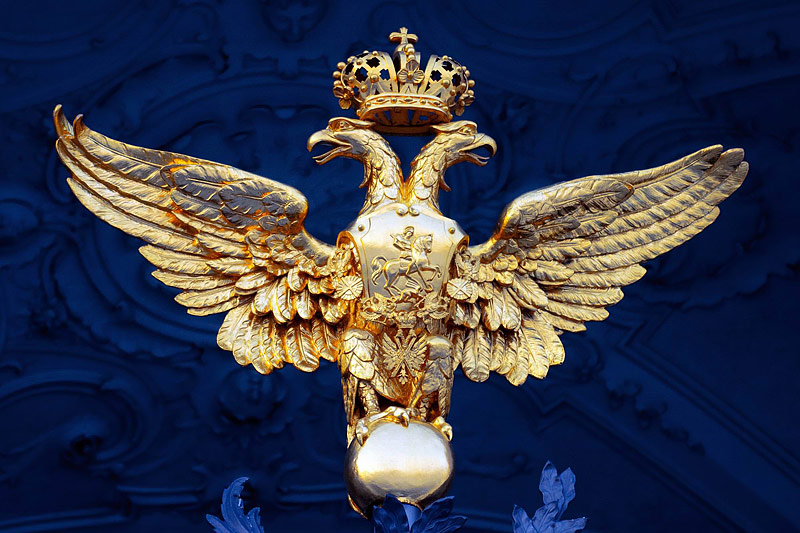
In 1905, the Winter Palace was a mute witness to the Bloody Sunday Massacre on Palace Square, when thousands of striking workers came to meet the Tsar in peaceful protest and were met by a re-enforced contingent of troops with orders to fire at will. Although Nicholas II was not responsible for this seminal tragedy, it marked the beginning of the end for the power of the Imperial family, which was increasingly isolated at its suburban residence. The Winter Palace saw the official opening of the first Duma in 1906, and Nicholas II and his wife returned to the palace to accept the salute of troops departing for the front in 1914. Soon, however, the Winter Palace was to be stripped of much of its wealth and transformed into a temporary hospital for wounded soldiers.
In 1917, after Nicholas II's abdication and the February Revolution, the Winter Palace became the seat of the Provisional Government under Alexander Krenskiy. It was against this authority, rather than the Imperial family, that the Bolshevik-led revolutionary forces besieged and then stormed the palace in October of the same year. In the ensuing anarchy, a portion of the Winter Palace's riches were ransacked, including the enormous Imperial wine cellars (although the looting did not extend to the Hermitage).
The Winter Palace was declared part of the State Hermitage Museum on 17 October 1917. Although initial Bolshevik policy was to remove all Imperial symbols from the palace and use the premises as a museum of the Revolution, the restoration project of the 1940s and 1950s, which followed further extensive damage to the building during the Siege of Leningrad, saw the beginning of an ongoing process to return the Imperial splendor of many of the palace's rooms. The State Rooms of the Winter Palace now form one of the most popular sections of the Hermitage, and are essential viewing for all visitors to St. Petersburg.

